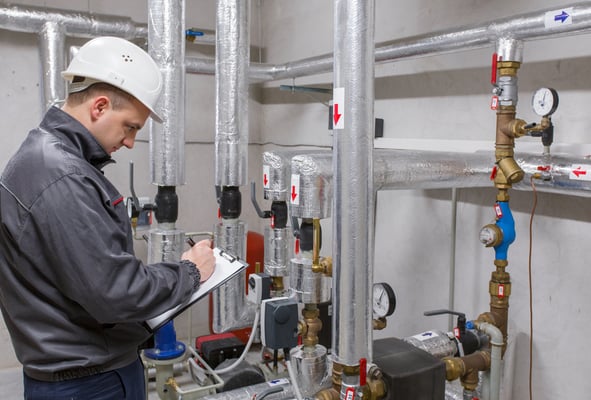3 Simple Ways to Save on Heating this Winter

As winter approaches, the heating expenses of homes and businesses start to increase. This is especially true in older properties with low insulation, or with HVAC systems that have never been upgraded. While a deep retrofit can drastically reduce your heating costs, there are quick and simple measures that also work.
This article will describe three simple measures that reduce heating costs in buildings, which can be deployed quickly and with minimal investment. These measures are especially useful in buildings with high heating bills, now that winter has almost arrived.
Identify the best energy efficiency measures for your building and save electricity and gas.
1) Finding and Sealing Air Leaks
Air leaks waste energy all year long, not only in winter. In the summer months, they allow contact between cool indoor air and warm outdoor air, and vice versa during winter. However, finding air leaks can be challenging because they are invisible. Air leaks can be felt when you stand close by, but this is a very inefficient way to locate them.

Energy consulting engineers can pinpoint your air leaks very quickly, using methods like thermal imaging and pressurization tests. For example, a stream of cold air is invisible to human eyes, but a thermal camera can detect it right away. Thermal imaging can also detect parts of the building envelope with deficient insulation, even when no air leaks are present. To complement thermal imaging, blower door tests can determine the exact air infiltration rate in a building area.
Once you have detected air leaks and low-insulation spots, they can be fixed relatively fast with caulking, weatherstripping, and spray foam insulation.
- Caulking is used to seal air leaks that affect fixed elements. For example, caulking can be applied if the outer edge of a window frame has air leaks.
- Weatherstripping is used to airseal moving elements. For example, weatherstripping can be used to seal the space between a door and its frame.
- Spray foam insulation can be applied to hollow building elements that have poor insulation. Like caulking, spray foam insulation is designed for fixed components.
Applying these materials is cheap and fast, but make sure that air leaks and low insulation spots are detected first. That way, you will not waste material on building elements that are already insulated and airtight.
2) Setting Back the Thermostat

Many space heating systems run at full output all winter long. However, this is a waste of energy, unless the weather is cold enough to justify the full heating capacity. Most of the time, it is possible to reduce heating without a negative impact on comfort.
According to the US Department of Energy, annual heating and cooling costs can be reduced by up to 10% if the thermostat is set back 7-10°F, 8 hours per day. This schedule can be programmed into a smart thermostat or building automation system (BAS), and heating costs will drop even when HVAC installations have not been modified.
Setting back the thermostat is an energy-saving measure that works even with older heating systems. However, you will achieve even lower costs if the equipment also has a high nameplate efficiency.
The heating output should only be reduced when it will not affect comfort. A study by Lawrence Berkeley National Laboratory (LBNL) found that the ideal temperature for human productivity is around 22°C (71.6°F), but personal preferences also have a role. The WELL Building Standard recommends designing commercial spaces with a range of temperatures and letting occupants sit where they feel the most comfortable.
3) Getting a Professional Inspection of Your Heating Systems

A heating equipment upgrade can greatly reduce your energy bills. However, there are also cases where energy is wasted due to simple maintenance issues or configuration errors. The easiest way to detect these problems is by getting a professional inspection.
If you use fuel-burning equipment, a professional inspection can also help you improve safety. Flue gases must be exhausted properly since they are very dangerous when allowed to accumulate indoors. For example, carbon monoxide is lethal for humans at concentrations below 1%. With an inspection, you can determine if exhaust gases are leaking into the building.
A professional assessment of your heating systems can also identify opportunity areas for an upgrade. HVAC engineers do not recommend a major retrofit when space heating is required, but it can be scheduled for summer.
Conclusion
In places with cold winters, space heating is the largest energy expense for many buildings. Equipment upgrades and other major improvements achieve the highest energy savings, but there are also simple measures that are quick and affordable.
You can achieve quick energy savings this winter by air-sealing your property, setting back the thermostat, and getting a professional inspection of your heating units. A major HVAC upgrade will yield higher savings but is only recommended if it can be completed on time.

Anuj Srivastava
Anuj Srivastava is a principal partner at NY Engineers. He is known for his MEP franchise market knowledge. Anuj is currently leading a team of 100+ MEP/FP engineers and has successfully led over 1500 franchise projects in the US.
Join 15,000+ Fellow Architects and Contractors
Get expert engineering tips straight to your inbox. Subscribe to the NY Engineers Blog below.



